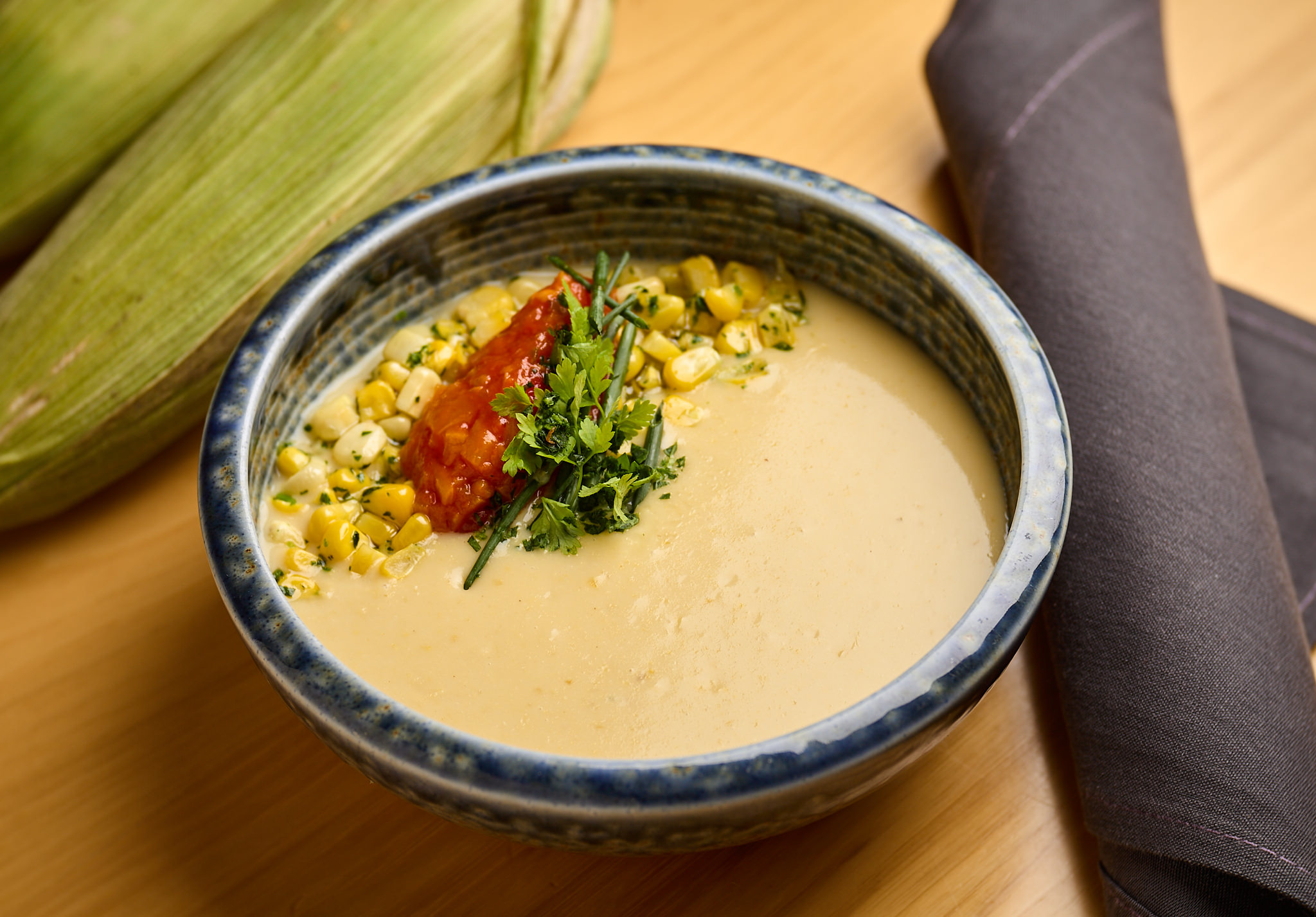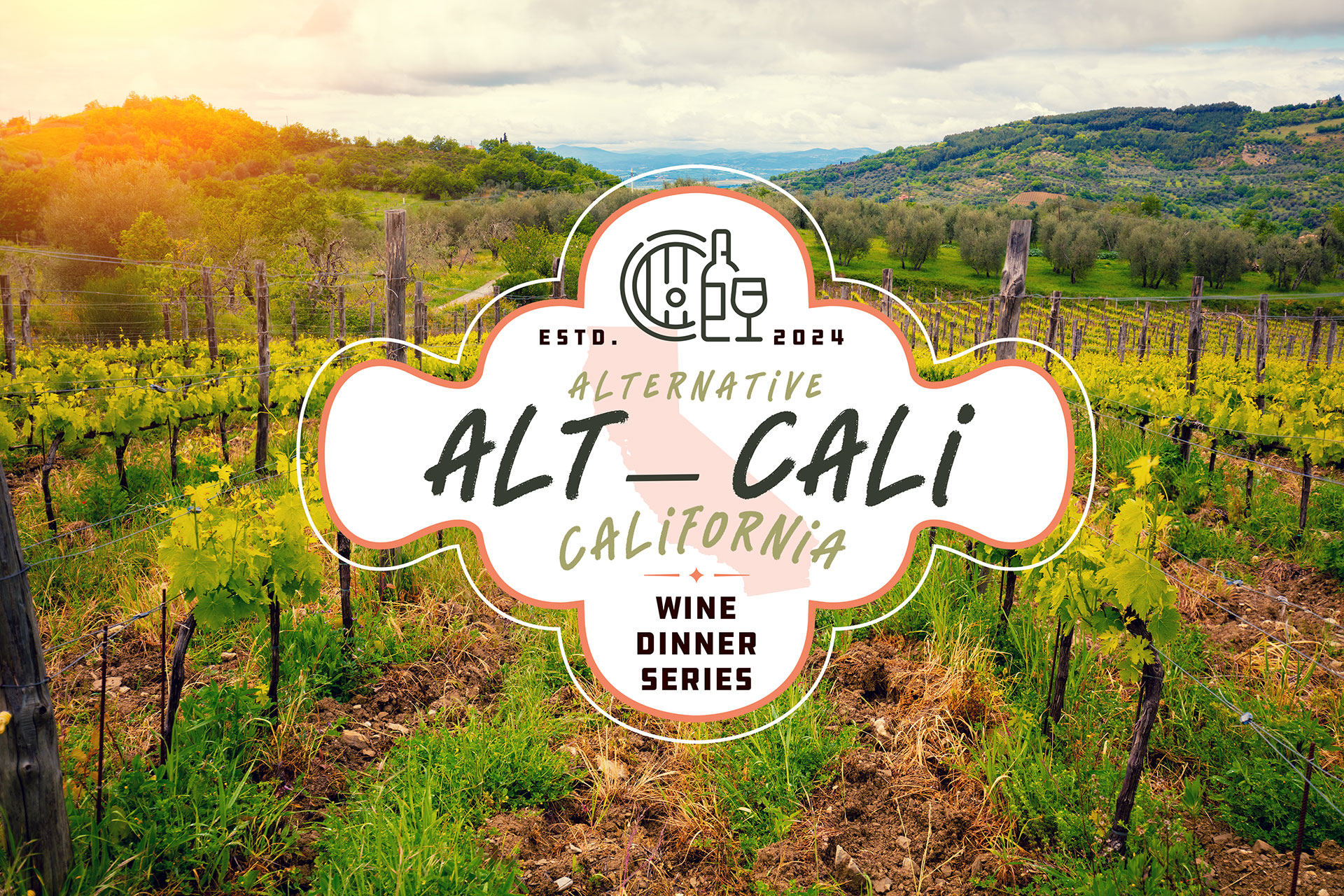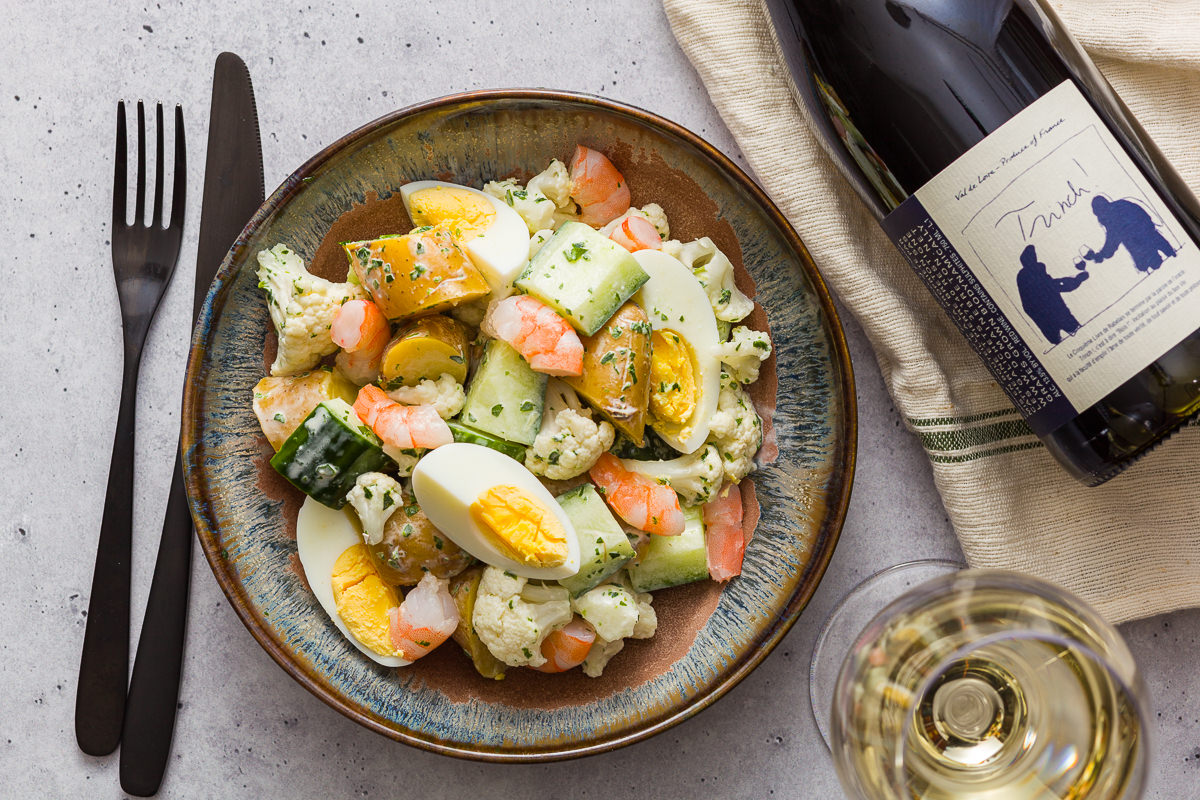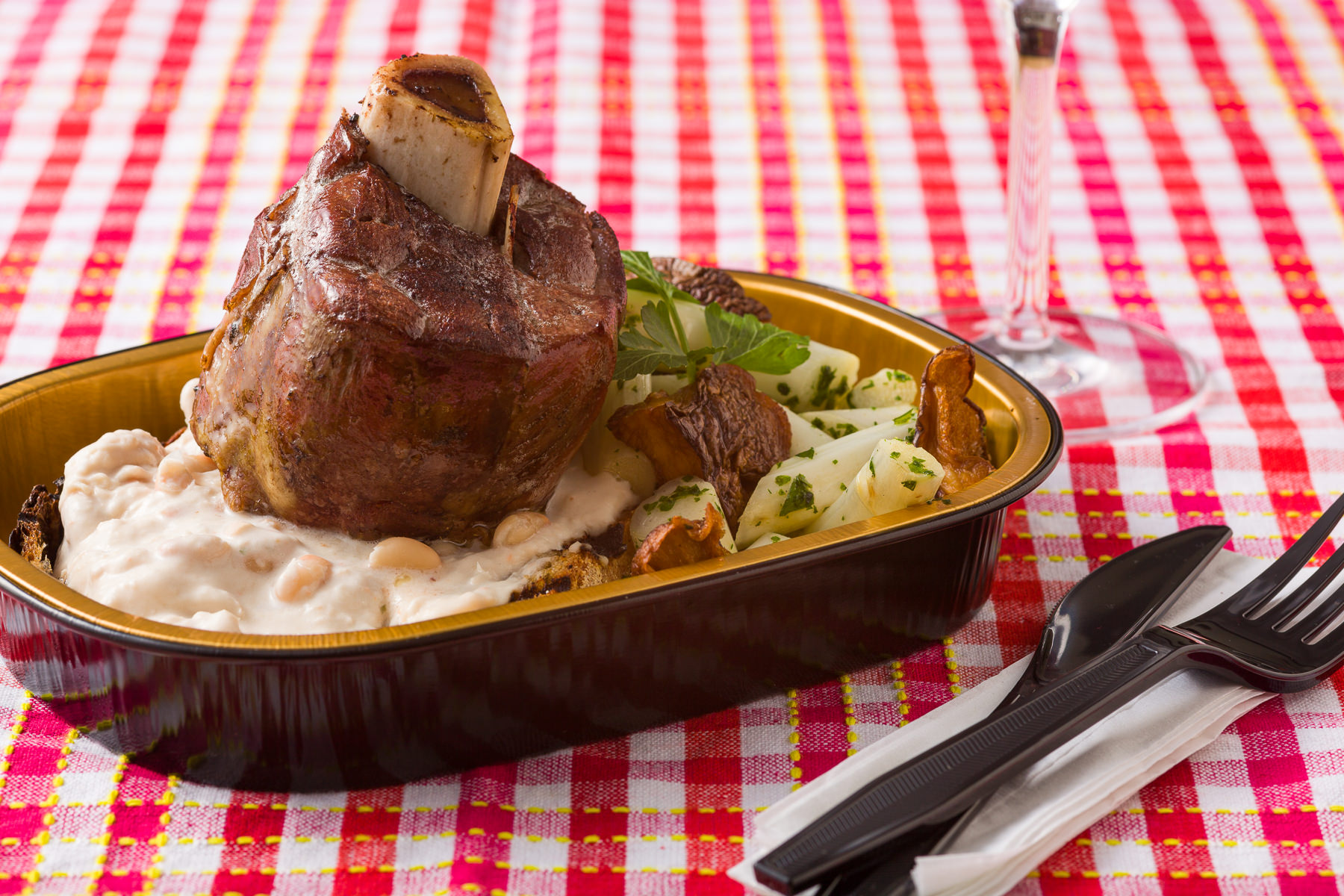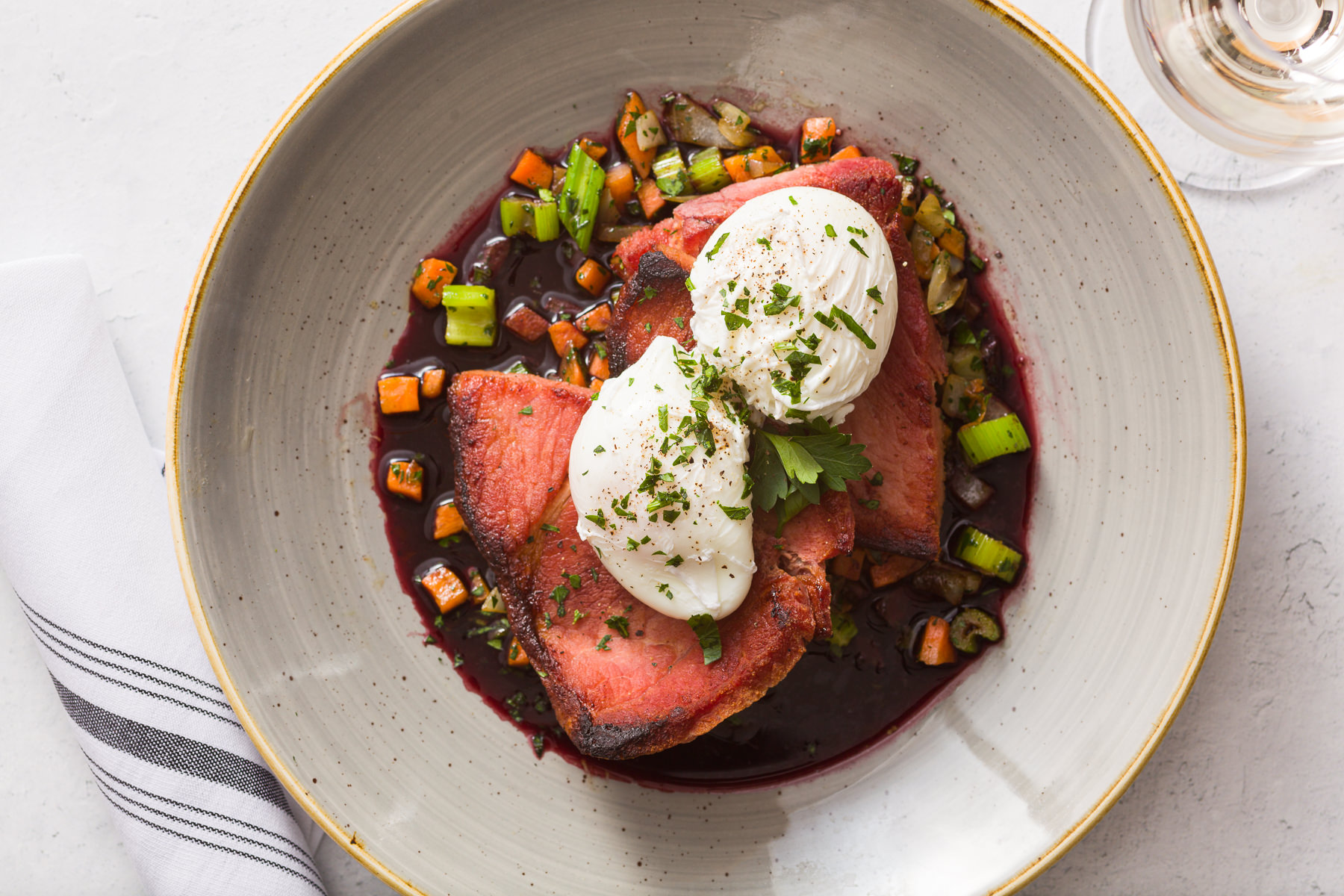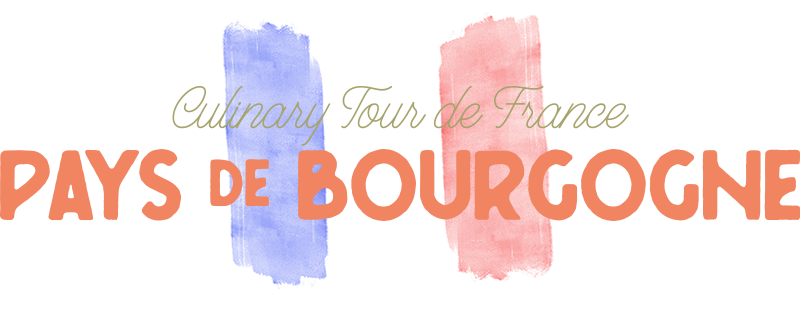
As Cadre continues to study Le Pays de France we are learning how each region overlaps, bleeding into the next, and how difficult it becomes to describe the character of a place in a few words. It would be wise then to let the food do the talking, or in this week’s case, the wine because in Pays de Bourgogne wine is present on the table or in the pot at every meal.
That’s no surprise because Burgundy is the most well-mapped and classed wine region in the world, right down to single rows of grapes. Here, vineyard owners trace their inheritance back many family generations to Catholic monasteries, Frankish Kings, Roman trading outposts, and prehistoric Celtic settlements.
Centuries of trial and error are teaching Burgundians exactly what will grow best where, and they have learned to incorporate some of their most sought-after wines with what they eat.
Cadre hopes to find the same inspiration from farmers and winemakers here in Wisconsin.
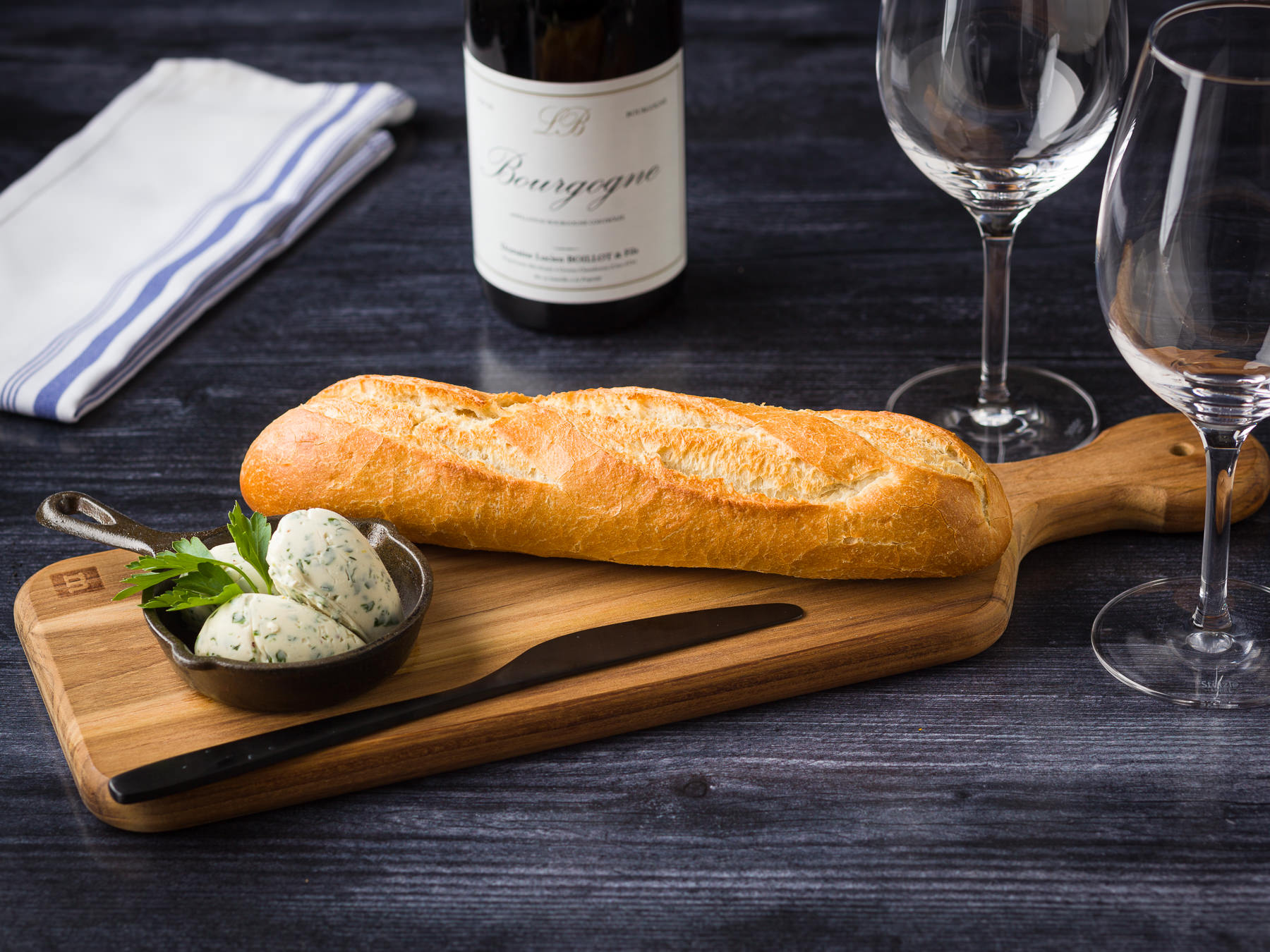
Bread with Compound Butter: sourdough miche with white anchovy-parsley compound butter
Parsley is an extremely important herb to Burgundy. It’s part of the bouquet garni for Boeuf Bourguignon, in which the Charolais beef itself is said to be scented by a diet of wild parsley, and compound butter with parsley is an essential ingredient to other regional dishes such as Escargots à la Bourguignonne. Here we have paired the herb with a Mediterranean white anchovy and lemon zest for a classic, savory, and bright herbal compound butter. Feel free to save some of this butter for use in other applications.
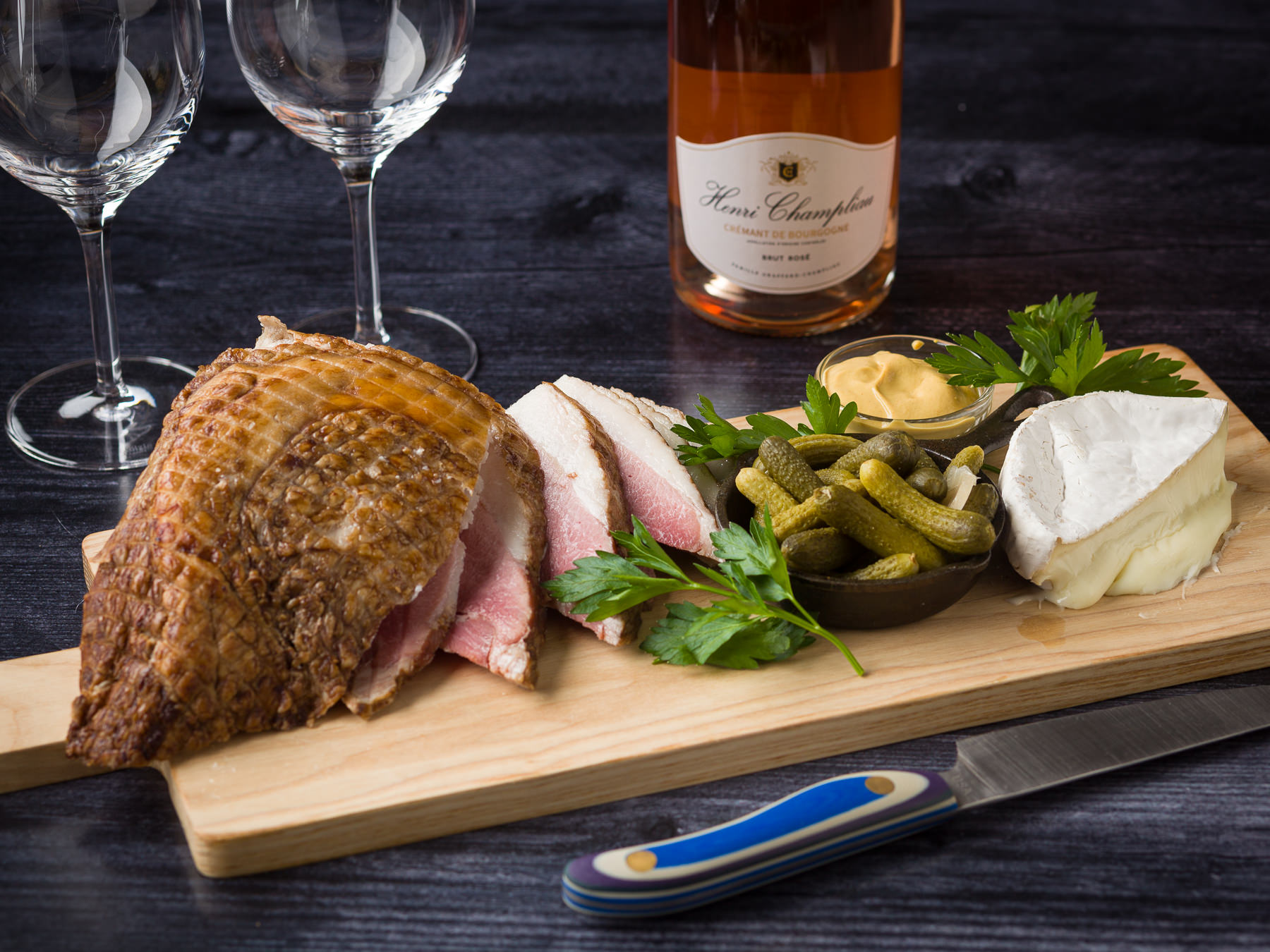
Charcuterie: Enos Farms cured smoked ham, La Von goat cheese brie, Dijon, cornichon, parsley
The most popular ham-based dish in Burgundy is jambon persillé (ham in parsley jelly), which is normally eaten around Easter. We’ll spare you the aspic this week by instead substituting smoked ham from one of our favorite local producers, Enos Farms of Spring Green.
Jeremy Lynch at Enos raises heritage pigs in the Driftless Area of Wisconsin where he has been using a unique pasture system that combines organic sillage with foraging. After more than a dozen successive generations requiring his pigs to supplement their diet with wild mushrooms, nuts, and herbs there is a notable boar-like sanguine flavor to Enos pork that is distinct from its terroir.
This wonderful cured smoked ham is served sliced with a farmhouse goat cheese brie from another European-style local producer (La Von of Black Creek), Dijon mustard, cornichons, and parsley.
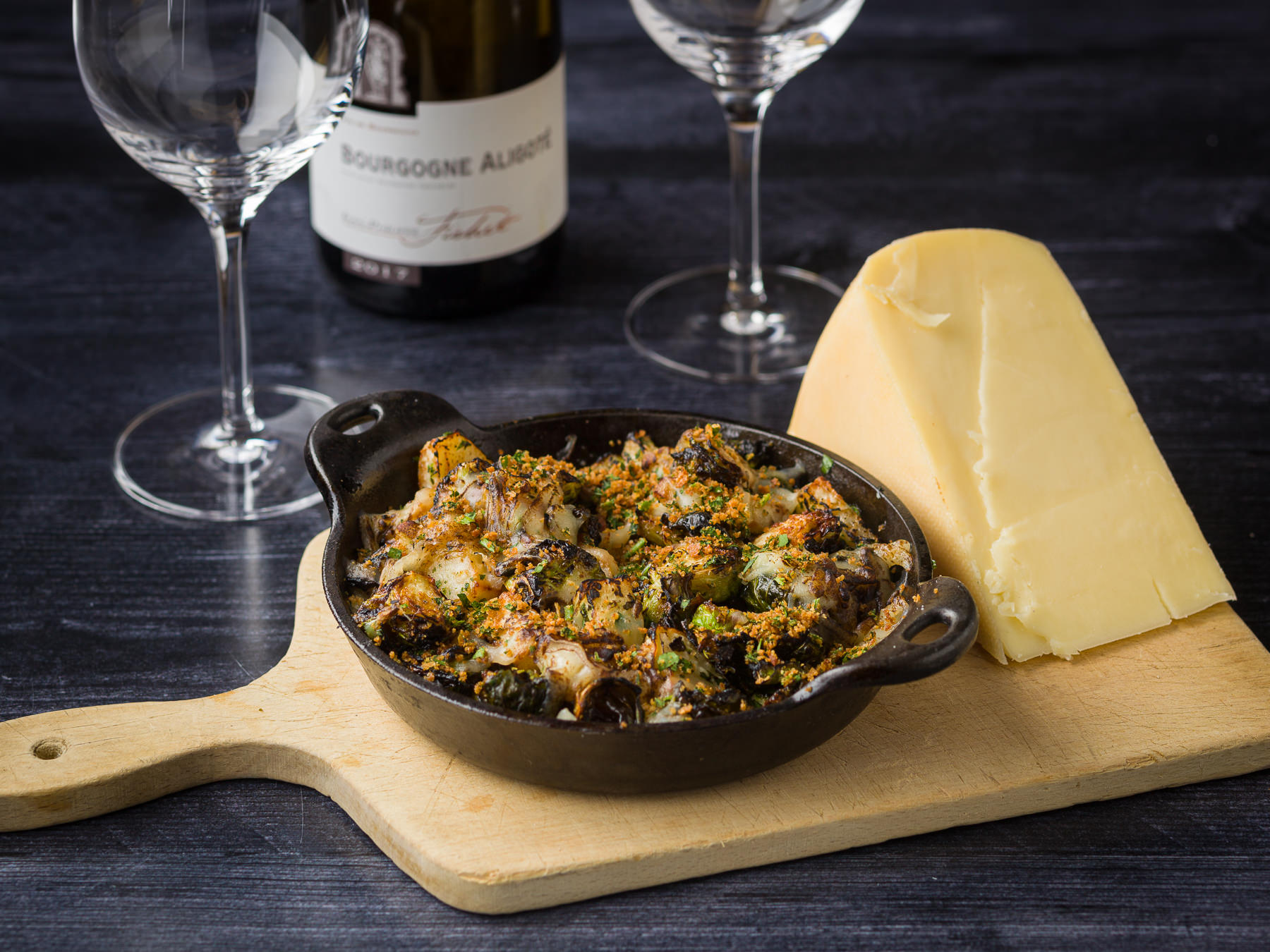
Raclette de Légumes: roasted Brussels sprouts and kohlrabi with raclette cheese and bread crumbs
The raclette method involves melting cheese (historically over a fire) and scraping it onto potatoes or vegetables. Although it is typically associated with fondue of the Savoie region in the Alps, the northern Bourgogne-Franche-Comté region also uses the method which is decidedly Swiss in origin. Here we’ve paired an imported raclette cheese from Emmi Roth with a combination of roasted Mediterranean vegetables: Brussels sprouts and Kohlrabi (also known as Savoy or German Cabbage).
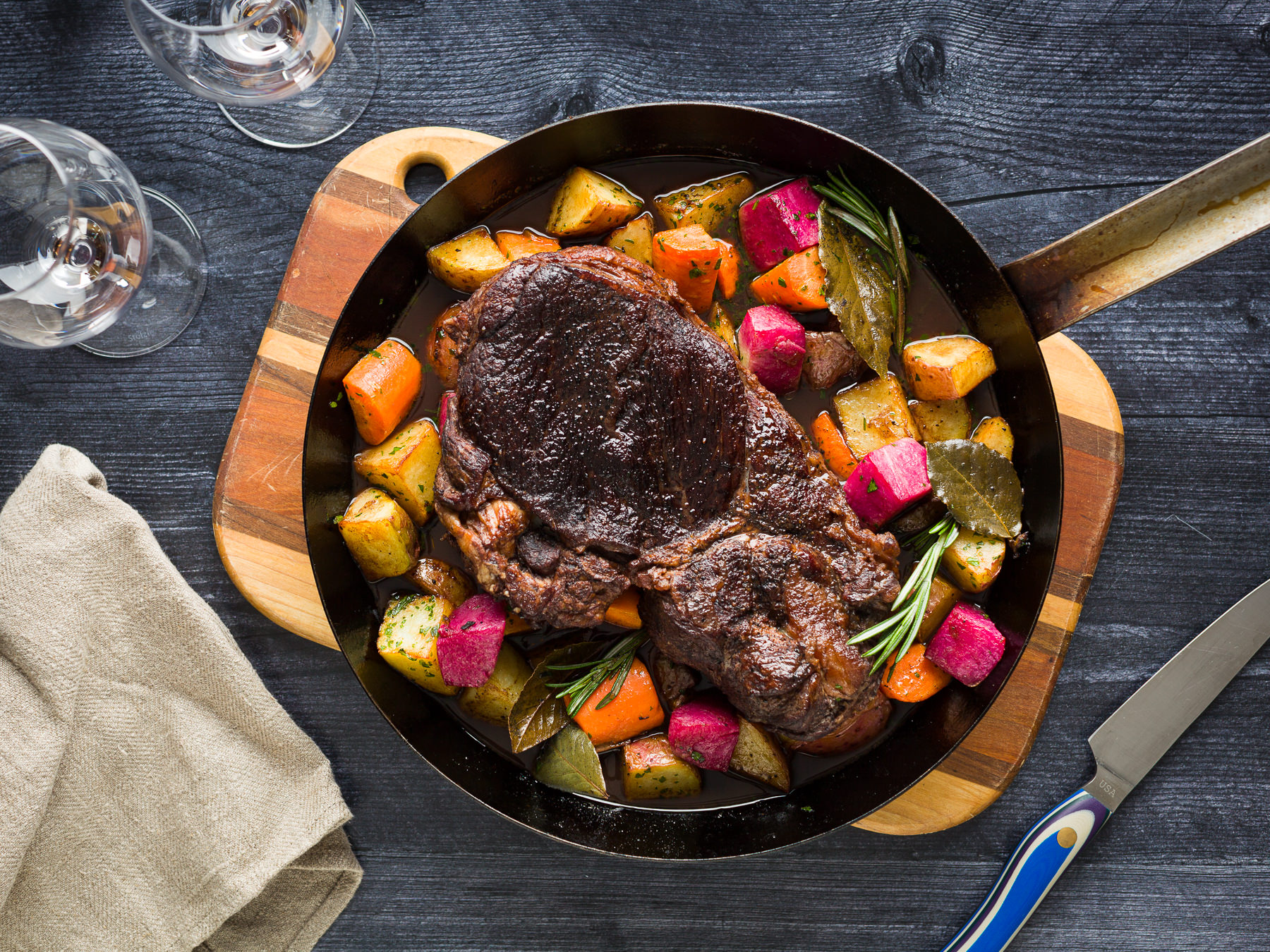
Boeuf Bourguignon: Cates Family Farms beef stew braised in red wine sauce with bacon lardons,
beauty heart radish, winter carrot, pickled pearl onions, roasted red potatoes, and parsley
The dish we know as beef bourguignon does not actually have a centuries-old pedigree; in fact, it only became an international phenomenon in the 20th century. The root of the dish is its reduced red wine sauce (meurette), which is derived from the espagnole mother sauce. There is some evidence to suggest that since Vezelay in southern Burgundy was a starting point for pilgrimages to Santiago de Compostela, returning knights and travelers from Spain may have brought back a taste for the reduced brown sauce, marrying it with their own red wine base to form sauce bourguignonne.
What likely began as a peasant dish for rescuing and intensely flavoring tough cuts of meat has now become an institution, and Chef Evan Dannells has been enamored by it for more than 20 years, constantly finding ways to tweak and perfect it. This version features winter vegetables, bacon lardons (thank you, Julia Child), and beef from a producer very special to us, Cates Family Farms, also of the Driftless Area.
Now in its fourth generation, the Cates family demonstrates an unparalleled commitment to conservation, landscape restoration, and animal husbandry. Located in the Wyoming Valley, home to Taliesin, Cates Family Farm was the first beef farm in America to be approved by the Animal Welfare Institute (2006), and just this year Dick Cates Jr. (PhD. UW Soil Sciences) received the Distinguished Service to Wisconsin Agriculture Award.
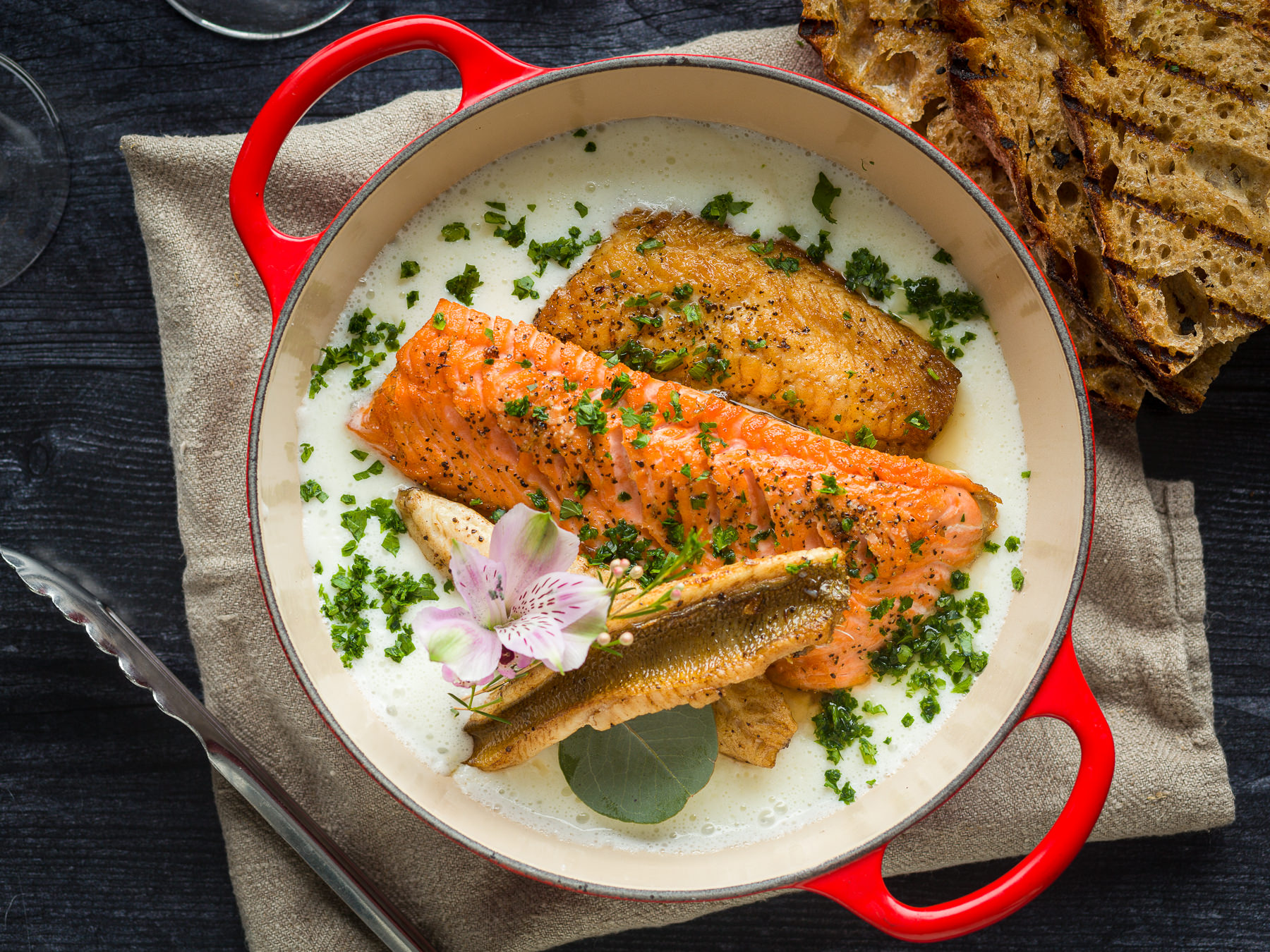
Pôchouse Bourguignonne: perch, whitefish, and rainbow trout poached in white wine seared then
served in cream sauce with mirepoix and sourdough bread
Sometimes referred to as the “Bouillabaisse of Burgundy”, pôchouse (“fish stew”) is made from locally available river fish that are poached in a wine sauce with classic mirepoix (matelote). Historically the dish was a poor fisherman’s ‘shore lunch’ stew made from by-catch (often just carp and eel) and the white wine used would be Aligoté de Bourgogne. This acidic, citrus-forward white wine grape grows prodigiously in Burgundy but is mostly used in cooking or doctored with crème de cassis to make a Kir cocktail rather than drunk straight. That’s a shame because this simple dish of fish in a cream sauce begs for a generous pour of lean and mineral-forward white wine.
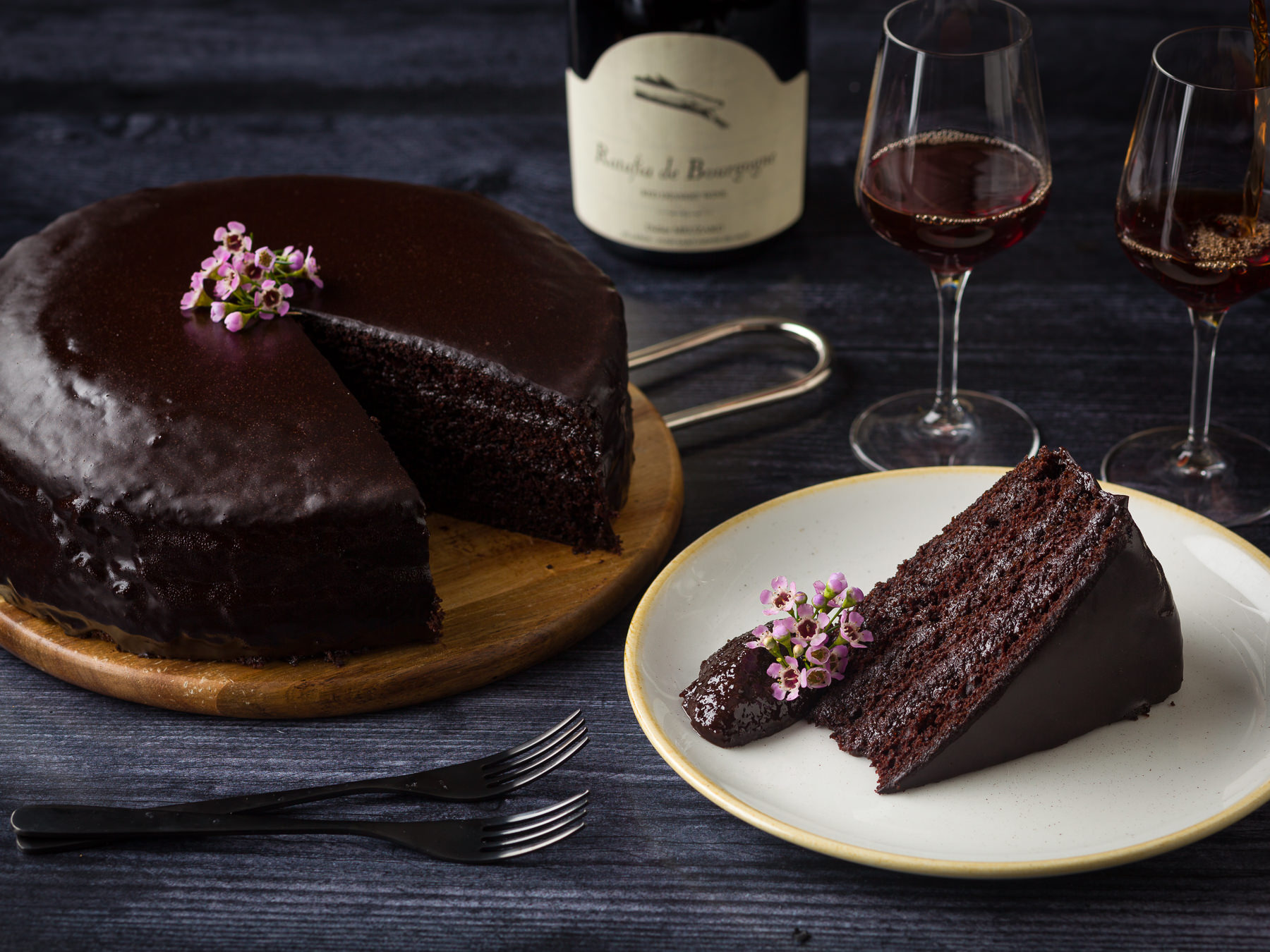
Cassis Gâteau: Dark chocolate ganache cake with red wine-cassis gastrique
Cassis, or black currants, are native to Northern Europe and Russia but were first cultivated in monastery gardens, which may explain their prevalence in Burgundy. Dark and strongly flavored, black currants have been variously used medicinally for their high vitamin content, as a source for ink, and as a beverage. Originally a ratafia was made by fortifying unfermented black currant juice with pomace brandy and later whole clusters were macerated and infused to make crème de cassis liqueur. The best quality cassis came from Dijon in Burgundy where it is now given protected status.
Cassis is most often associated with the Kir cocktail, named for Felix Kir, a priest, resistance fighter, and the first mayor of Dijon after WWII. Now one of Burgundy’s greatest exports, apart from its wines, Cassis Noir de Bourgogne is one of the few available sources of black currant flavor for culinary use because of a ban on growing black currants in many US states. Fortunately, Wisconsin is not one of them, and a handful of producers have recognized the state’s cool climate and rich soil as an ideal site for growing high-quality gold, red, and black currants.


